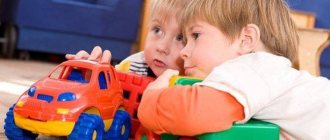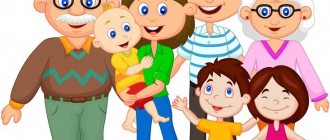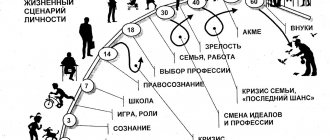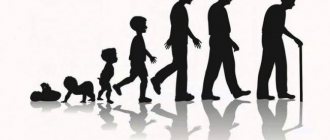A person is an integral part of society, all members of which influence each other. The essence of socialization is closely related to the concept of personality. It is important to understand the fundamental differences between personality, person and individual.
Personality is a set of qualities and traits of a person acquired in the process of communication and activity. Man is a representative of the human race, a species of living organism. An individual is a specific member of social society, endowed with certain qualities.
Cultural and social experiences contribute to the formation of personality from a biological being. Social experience implies a set of rules, norms and values, as well as the culture of various activities. A person by nature is not a person, since culture cannot be transmitted genetically. The transformation of a biological being into a social subject and personality occurs through socialization.
Socialization is a process characterized by the influence of society on a person, the latter’s mastery of norms of behavior and social roles. To maintain a comfortable standard of living, there is a need to adapt to the constantly changing conditions of the outside world and society. The formation of a person as a social being occurs throughout life. The socialization of an adult and a child differ from each other. An adult is socialized with the goal of acquiring new interaction skills, while the socialization of a child involves the process of creating motivation for behavior. Consequently, there are two types of socialization: primary (mastery of a system of norms and values by a child) and secondary (mastery of rules by an adult).
Socialization factors
By scale, factors are divided (A.V. Mudrik) into:
- megafactors;
- macro factors;
- mesofactors;
- microfactors.
Megafactors
These are global factors that influence any person: space, Earth, humanity.
Space is considered as a kind of spatially ordered structure of the Universe, which includes all space and all material objects and forms of energy in it. Man is part of the Universe. Humanity has already gone beyond the boundaries of planet Earth, and, although it is only taking its first steps, it has the prospect of becoming a transformative force on the scale of the Solar System, the Galaxy and the Universe as a whole. In this regard, understanding one’s place in the universe and taking responsibility for human actions on a global scale influence the formation of the individual and his actions in society.
Planet Earth is the homeland of our civilization. The vast majority of people, with the exception of a few, spend their entire lives on Earth. In this regard, the physical and biological living conditions dictate a person’s part of his needs: the need for clothing, shelter, food supplies. And these needs already dictate the very need for social interactions, both as a method of more effective activity than individual activity, and as well as the forms of these interactions.
Society as a whole, humanity, in the words of V.I. Vernadsky, has long been a geological force transforming the appearance of the planet. In this regard, the individual person begins to be influenced by the consequences of such a transformation, primarily in the form of the technosphere. Humanity exerts a global influence on its internal processes, although this influence today is predominantly unsystematic.
Macro factors
This is a state, country, society (in the sense of a specific cultural and economically determined community).
Country as a basically geographical concept defines, to a first approximation, the territory that a person considers as “his own,” building his relations on the basis of territorial affiliation. Natural and climatic features influence human behavior both directly (through temperature, available crops for cultivation and nutrition) and indirectly (through transport accessibility, economic prospects for activity, etc.).
The state is a political concept. A person acts as an object and subject of civil rights, masters forms of legal interaction with other people. A citizen has a number of fixed obligations to the state, and vice versa, the state has a number of obligations to each citizen.
Society is a direct participant in the socialization of a person as a source of norms, rules, and guidelines. As a subject authorizing and evaluating various forms of behavior, and as an object of redistribution of resources and information regarding an individual and social groups of various sizes. Each society has a specific set of culturally and historically determined norms; in this regard, the circumstance arises that when moving to a new society, an individual may experience the need for new socialization. Society has a structure of strata (sometimes castes, as in India), belonging to which leaves its mark on the norms of behavior with others, the volume and structure of knowledge necessary for assimilation, value attitudes, etc.
Mesofactors
This is an ethnic group, a region, a type of settlement, and means of communication (including mass).
Ethnicity as a national-cultural community is the bearer of traditional values, a genetically determined appearance accepted as the norm, and, most importantly, language as the basis of thinking and the basis for interaction with culture. Here ideas about beauty, consumption standards, housing features, methods of self-realization, etc. are formed. That is, a person acquires concepts about vital needs and the nature of satisfying these needs on the basis of social interaction and acquired mental values. The spiritual makeup of an ethnic group largely determines the main status of a person before the start of professional activity.
The region of residence can be described as a “small homeland”, i.e. This is the part of the planet where the first years of a person’s life pass, which he perceives as directly his territory. It is known, for example, that people who frequently move at the age of 10-15 years do not have an image of their homeland in their psyche and do not acquire it in the future. The region of residence provides specific life examples of the interaction of large groups of people, their influence on nature, and contributes to the formation of human interaction with specific phenomena of living and inanimate nature.
The type of settlement mainly influences the formation of the nature of interaction with living and inanimate nature, and the technosphere. It influences the availability of medical, educational and other needs and related services, local mobility, and the frequency and strength of social contacts and connections. Socialization in cities takes place with a huge concentration of the population, people live literally on top of each other (multi-story buildings), the nature of social interactions is highly anonymous, contacts are frequent and massive, the requirements for compliance with hostel standards are of increased rigidity. In this regard, the scale of criminalization of society and opportunities for criminal socialization are growing. The larger the city, the more clearly these features appear. In rural areas, population density is significantly lower. The frequency of social interactions is several times lower and acquires greater value, personal significance and depth than in the city.
Mass communication media (MSC) are technical means (print, radio, cinema, television) that disseminate information to quantitatively large, dispersed audiences. They implement a mechanism for individual and group selection, evaluation and interpretation of reported information. When considering social media as a mesofactor of socialization, one must keep in mind that the direct object of influence of the flow of their messages is not an individual, but the consciousness and behavior of large social groups, i.e. mass consciousness and behavior.
Microfactors of socialization include school, family, peer group, etc.
During training, the student becomes familiar with various facets of the culture accumulated by humanity, gaining knowledge about the outside world. And a huge layer - the inner world of a person - remains virtually outside the boundaries of school curricula.
Modern school teaches us to exist in the world of knowledge, skills, abilities, and not to live among people. Interaction with wildlife, especially in urban schools, is developing poorly.
The parental family is crucial in the formation of the emotional world, self-awareness and moral foundations of the individual in the first years of life. If this is not done or done poorly, it is extremely difficult to make up for the loss. Later, especially in adolescence, parental attention noticeably weakens, giving way to other factors - school, peers, etc.
The need to communicate with peers exists at any age. Already a six-month-old child responds with crying to the crying of his peer. At one and a half years old, children can smile at each other and exchange toys. For older preschoolers, communication is simply necessary. A child deprived of such communication loses in his communicative development.
Although children learn language mainly from adults, some intuitive and communicative abilities are formed only in communication with peers.
Stages and Stages
Personal socialization goes through two main stages - primary and secondary. The primary stage is typical for childhood and adolescence. During this period of time, the child actively interacts with family members and peers. The primary stage is important because the individual acquires basic knowledge of how to communicate and interact with people. The child is also instilled with a number of moral principles that will guide him in the future.
The second stage is called resocialization, which is understood as the re-socialization of the individual. During this process, acquired foundations and knowledge are destroyed, and the individual is characterized by spontaneous changes in the perception of the surrounding world. During secondary socialization, the individual can be influenced by the people around him (mostly close ones), colleagues, and managers.
Speaking about the main stages of personal socialization, it is worth noting that many specialists in the field of psychology have defined differently how human socialization occurs. Separately, the theories of Kohlberg and Petrovsky should be highlighted.
Lawrence Kohlberg defined the stages of socialization within his theory of moral development:
- Avoid punishment.
- Get a promotion.
- Adapt and get approval.
- Understand and accept social norms and values.
- Reveal the inconsistency of the structure of society and the system of values that dominates it.
- Form your own values and principles.
Some people go through all stages of socialization in adolescence, others complete this path in adulthood.
A.V. Petrovsky developed a different theory, according to which a person goes through the following stages of socialization:
- Adaptation. Occurs in early childhood. A person adapts to life in the family, school, interacts with loved ones and peers. At this time, the foundation is laid on which the further development of a person as an individual is built.
- Personalization. At this stage, a person no longer assimilates, but reproduces those social norms that he adopted in the process of adaptation. Individuality appears as the individual reproduces previously received information in the way he understood it and is accustomed to applying it.
- Integration. In the process of integration, an optimal place in society is obtained. Social connections are developed at the level at which a person needs it. Upon completion of the integration stage, the individual is ready for self-development and feels comfortable.
The difference in the theories of Kohlberg and Petrovsky lies in the way the stages of socialization are distributed. Some scientists conclude that Petrovsky’s theory has the form of directed socialization of the individual, and Kohlberg’s theory is undirected.
Depending on what stage the individual is experiencing, types of socialization are also subdivided. They correspond to which social institution a person spends more time in - family, work, group.
Mechanisms of socialization
The mechanisms of socialization include: socio-psychological and socio-pedagogical.
The first group includes : imprinting, copying, reflection, existence.
Imprinting is the creation of attachments to what is seen for the first time; in the future, a person experiences the joy of recognition and emotional attachment. Copying behavior is adopting behavioral norms directly from the people around you. Reflection is the creation of a system of behavior based on internal logical reasoning. Existence is the acquisition of skills, including language, under the influence of the immediate environment.
The second group includes : traditional, institutional, interpersonal, stylized.
In the traditional mechanism, the individual’s environment does not make any specific efforts for socialization and socialization occurs spontaneously. Institutional is socialization in kindergartens, schools and other public institutions of socialization. The interpersonal mechanism works in conditions of emotional closeness, when an individual’s behavior is influenced by an emotionally significant subject and this influence is purposeful. The stylized mechanism is the influence of the subculture in which the individual is included.










